Tires (tires) are installed on the vehicle along with the rims (rims). Vehicles running on pneumatic tires are maintained inflated by air pressure. Tires are the only part of the vehicle that comes into direct contact with the road surface.
If the air pressure in the tire is incorrect, it can cause tire wear and reduce the tire's ability to generate power.
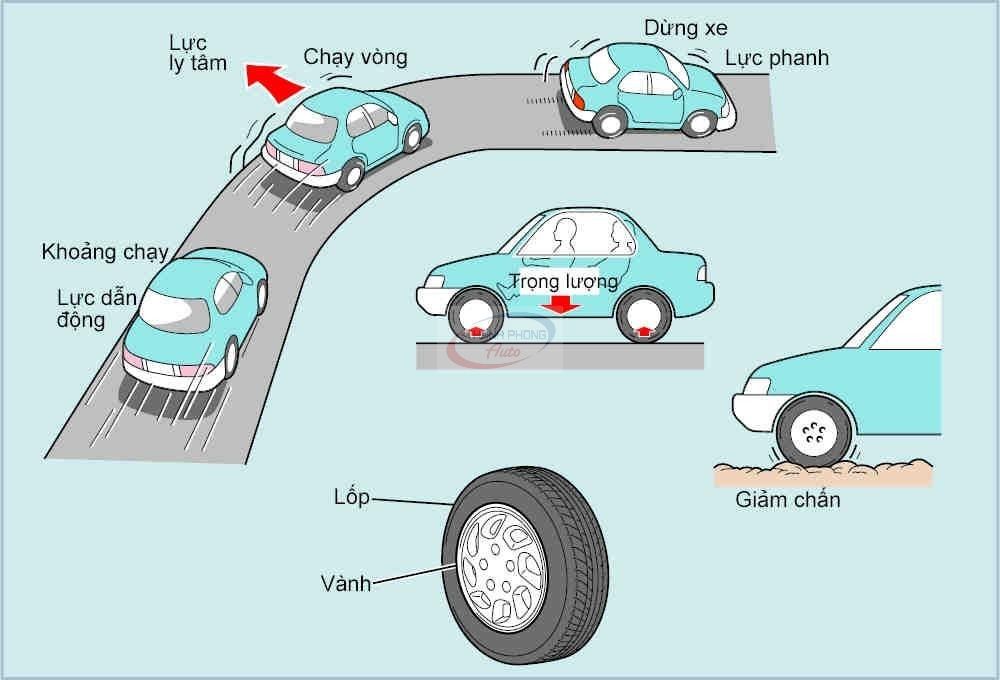
Tires perform the following functions:
Tires include tubeless tires and tubeless tires. In addition, there are also radial tires and diagonal tires, both types have the following parts:
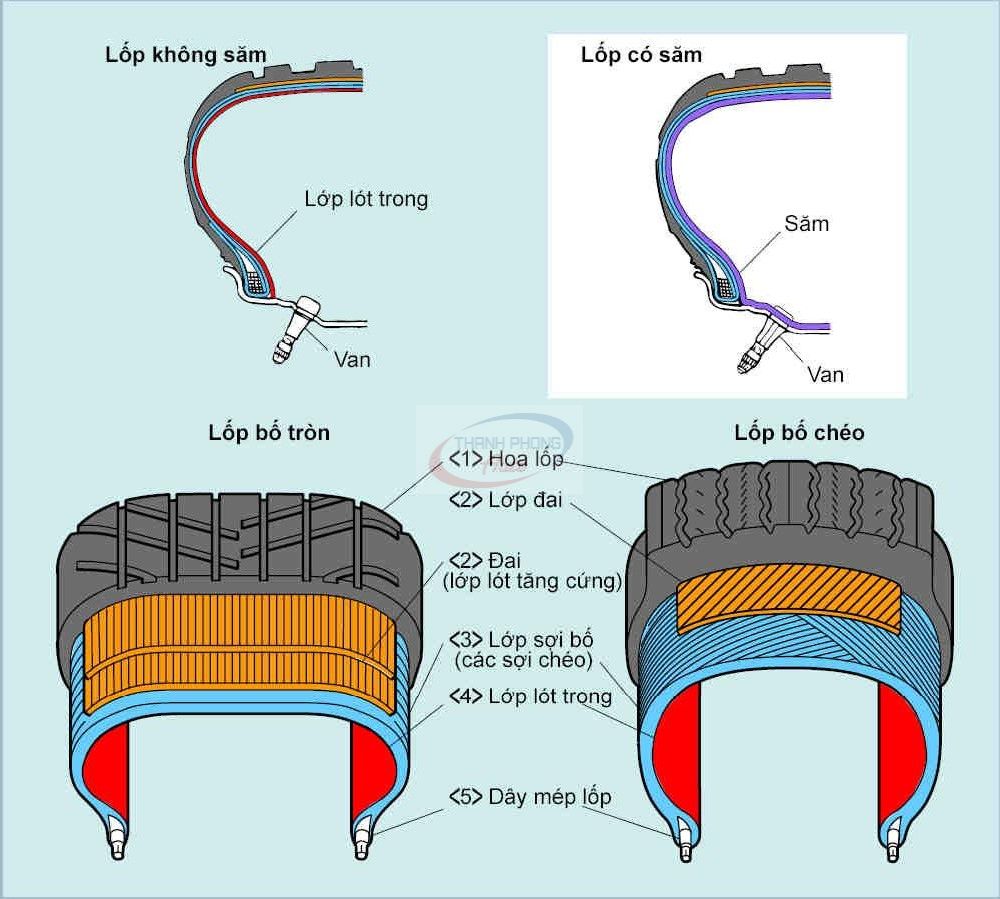
Tire size: the size, features and structure of the tire are clearly indicated on the side of the tire. The diagram below shows the different tire names and specifications.
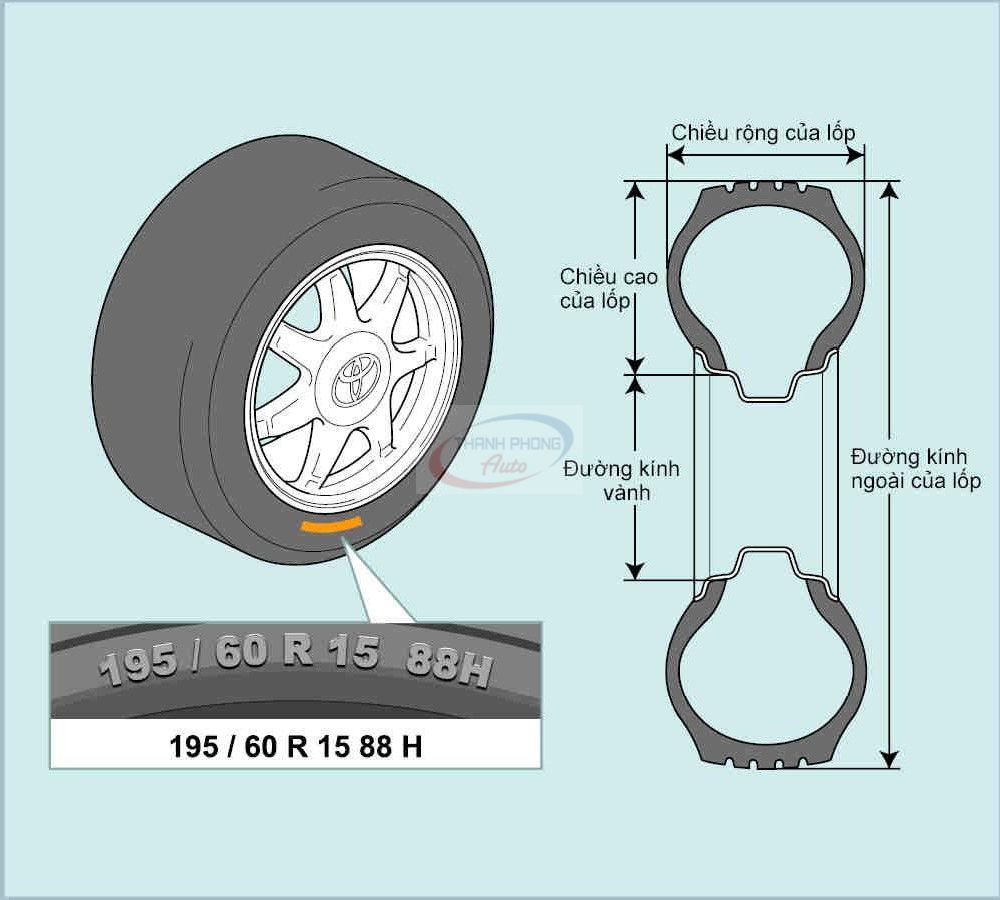
Rim: Wheel rim sizes are indicated on the edge of the rim
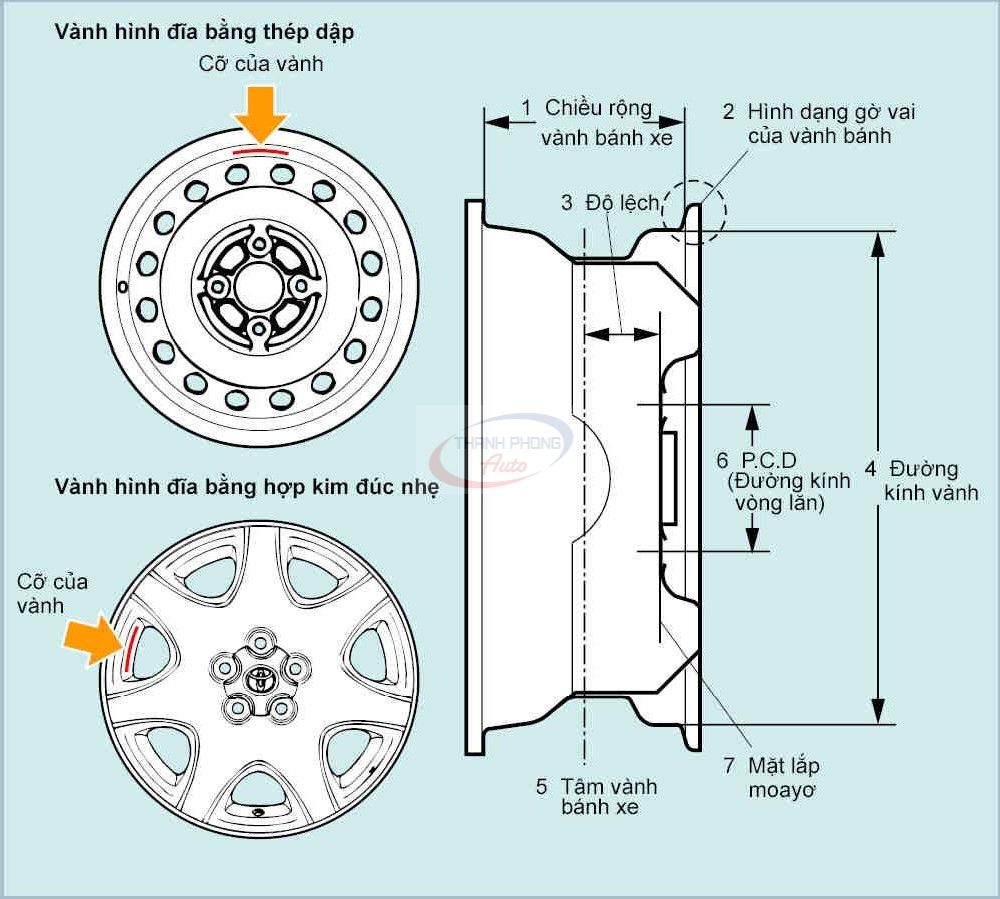
Tire treads are molded in many styles both to facilitate drainage and to cope with factors depending on the conditions of the road surface and the type of vehicle being used.
The near-vertical pattern consists of a number of zigzag grooves running along the circumference of the tire. This type is most suitable when driving on asphalt roads at high speeds and is used in many types of cars, from passenger cars to buses and trucks.
Characteristics:
The grooves in the lug pattern are approximately perpendicular to the outer ring of the tire. Commonly used on construction machinery and truck tires, this tread pattern is suitable for off-road use.
Characteristics:
This type of combination creates stable running performance on both paved and unpaved roads
Characteristics:
In this type, the tread is divided into independent blocks. Used on most snow tires and lugless tires, currently the block tread pattern is used on radial tires for even passenger vehicles.
Characteristics:
> Recommended: Experience in car tire maintenance
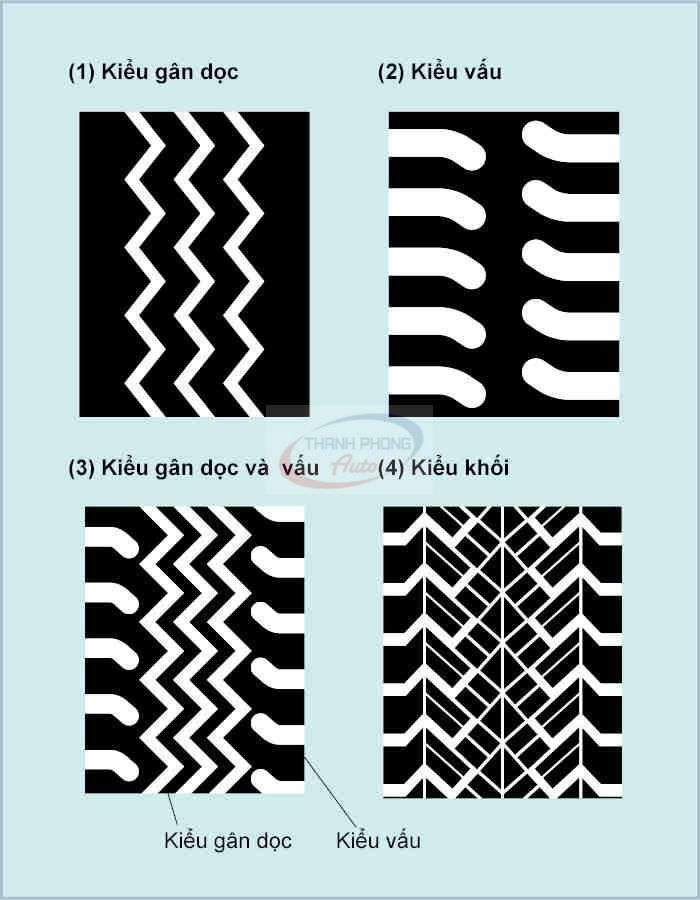
These are tires with tread patterns oriented in the direction of rotation. The horizontal grooves in the tread indicate the direction of rotation. Increases performance on wet roads, making it drain easier. The performance of these tires will be impaired if installed in the wrong direction.

Tire tread noise is the most clearly heard noise of the tire when the vehicle is running. The tread grooves in contact with the road surface have air entrained and compressed between the grooves and the road surface. When the tire tread leaves the road, compressed air bounces out of the grooves, causing noise.

Tread noise increases if the tire tread is shaped to attract more air into the grooves. For example, block or lug tread patterns may generate more noise than longitudinal rib patterns. The frequency of the noise will increase as the vehicle's speed increases.
Since tire tread noise depends on the tread pattern, it can be designed to minimize this noise. For example, based on the repeated installation of lugs and longitudinal ribs.
> Recommended: Prestigious and Quality Address for Learning Car Tire Making in HCM
Please refer to part 2 of the article introducing popular tire types suitable for different environments such as: Car tires for driving in the rain, slippery roads, car tires for driving on sand, car tires. driving on snow, distinguishing between studded and studded car tires.. and many other good information: Here
Cars Care Service Price Sheet At Thanh Phong Auto HCMC VietNam:
* The cars that we have mechanics: Mercedes, BMW, Audi, Lexus, Toyota, Honda, Mazda, Mitsubishi, Kia, Daewoo, Hyundai,Ford, Nissan, Volkswagen, Porsche, Chevrolet, Rand Rover, Innova, Fortuner, Vios, Fiat, Bugatti, Ferrari, Bentley, Hummer , Chrysler, Dodge, Renault, Cadillac, Volvo, Subaru, Daihatsu, Ssangyong, Roll-Royce, Peugeot, Smart Fortwo, Tobe M'car, Luxgen, Zotye, Haima, Geely, Baic, Hongqi, Cmc, Mini Cooper, Buick, Opel, Acura, Aston Martin, Vinfast, TQ Wuling.
To keep your vehicle running properly at all times, we offer a number of services that are carried out by our certified, expert auto service and repair technicians who have years of experience performing everything from oil changes to a complete engine overhaul.
LEAVE COMMENT